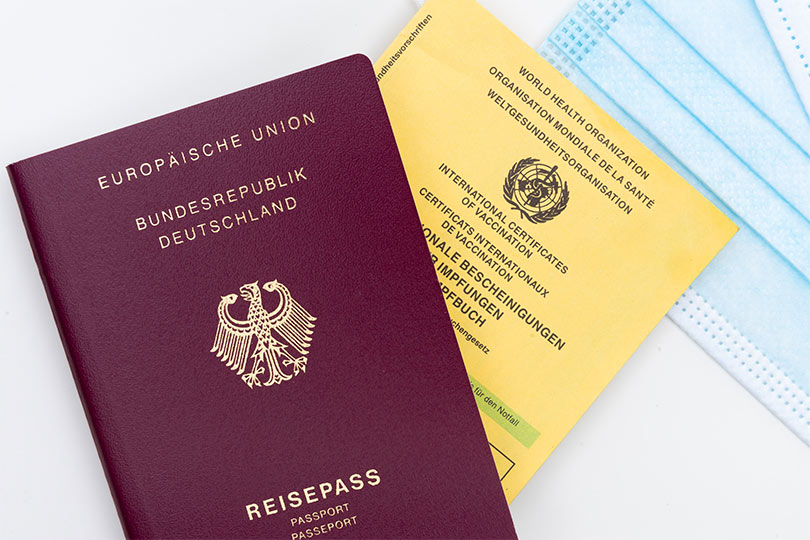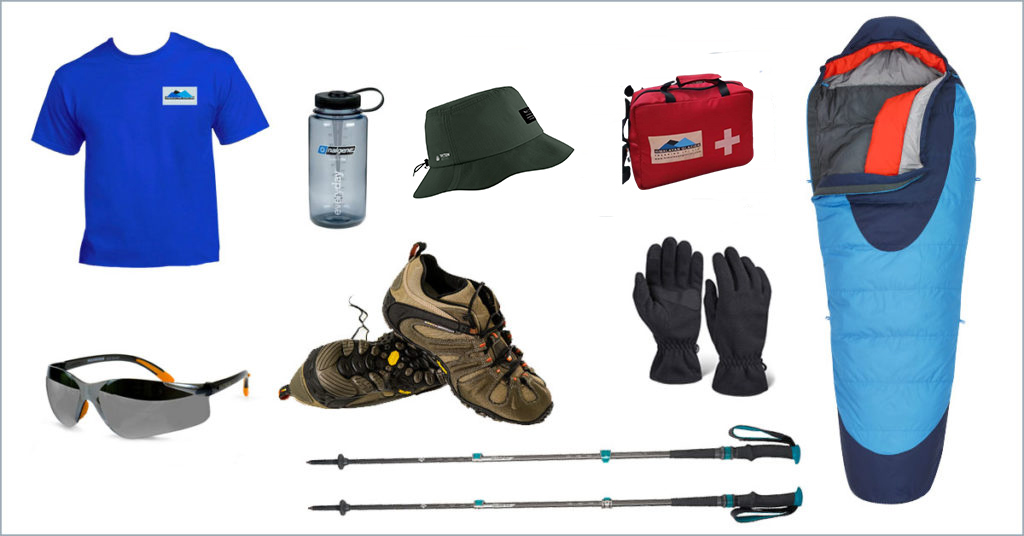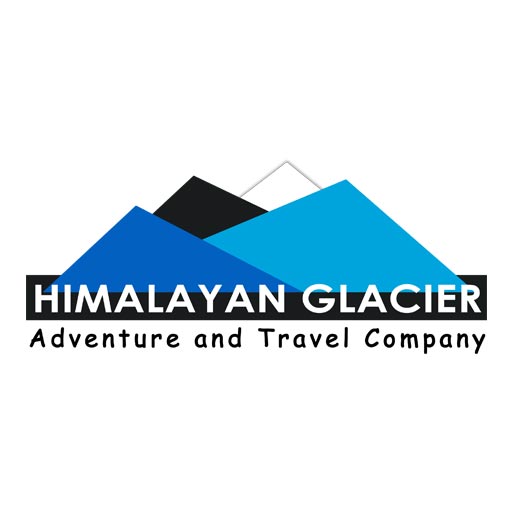Kanchenjunga is the world’s 3rd highest mountain and one of the most beautiful mountains in the world. Trekking in the Kanchenjunga region is one of the most isolated treks in Nepal. This trip is more or less similar to trekking to the base camp with just a slight variation on the route. Kanchenjunga has two camps, north base camp and south base camp. Trekking to the south base camp is a bit easier than the regular circuit trek while most of the trekkers reach both the base camps during the Kanchenjunga Circuit trek.

- Kanchenjunga trail – One of the remote treks in Nepal
- Do I really need a packing list?
- Packing List – The Ultimate Essentials
- Recommended Brands of Gears, Equipment & Accessories
-
Kanchenjunga Base Camp Trek FAQs
- 1. Where does the Kanchenjunga Base Camp trek start?
- 2. Can I do the Kanchenjunga base camp trek?
- 3. What are the exciting parts of the Kanchenjunga Base Camp trek?
- 4. How difficult is the Kanchenjunga base camp trek?
- 3. Can I trek solo to Kanchenjunga Base Camp?
- 5. What is the best time to trek to Kanchenjunga base camp?
- 6. How can I do the Kanchenjunga base camp trek without much difficulty?
- 8. How should I train for the Kanchenjunga base camp trek?
Kanchenjunga trail – One of the remote treks in Nepal
Detached far away from the chaos of the modern world, the Kanchenjunga trail is one of the most popular off-the-beaten-path treks in Nepal. Each year, thousands of trekkers hike to Kanchenjunga because it is one of the most famous treks in the Himalayas. It offers the delight of getting to relish the remoteness, seclusion, and some of the unique cultures hidden in the isolated region.
The remote trails of this off-the-beaten-path trek in Nepal passes through hilly landscapes, high mountain passes, alpine forests, and other natural splendors. In spite of its remote locality, the Kanchenjunga Circuit trek packing list is more or less same like all other Himalayan treks. It is very important that you pick the right gears for your Kanchenjunga trek.
Do I really need a packing list?
Packing list draws a clear picture of all the essential things that you will need during any trek. Although we may not be able to control the weather conditions, we can surely help you to be prepared and carry all the necessary items required for the trek. And, that is how important a packing list is. Remember that Kanchenjunga trek is a teahouse trek and like any other trek, the packing list for Kanchenjunga Circuit trek should not be overlooked.

For this trek, the packing list should include three categories namely clothing items, toiletries & medicines, and trekking gears & accessories. The gears and accessories are items which you can avoid carrying all the way from your native country because they are available on rent. And, if you wish, you can also buy them at cheaper rates in Kathmandu.
Packing List – The Ultimate Essentials
One needs to be smart enough to avoid over-packing or under-packing, and know exactly what things to take while trekking in the Kanchenjunga trails. Kanchenjunga trek is a moderately challenging trip; thus it is wise to keep an eye on the essential packing list. There is no doubt that you will need your hiking gears on the trek, but make sure that you have the right ones.
A comprehensive packing list for Kanchenjunga trek will help you pack the right stuff without any confusions.
In order to clear your dilemma of what to pack for Kanchenjunga Circuit Trek, we have prepared the ultimate packing checklist. This list is intended as a guideline and not definitive. Your final list depends on your preferences and sense of judgment.
From the list below, Himalayan Glacier will provide lodges, meals (3 times a day), sleeping bag, duffel bag, and down jacket (for all seasons). We will provide the items indicated by an asterisk (*) in the checklist which is included in the trip cost. Our porters are limited to carrying 33 lbs. (15 kg) of your personal belongings.
Be selective in what you carry!
1. Travel Documents

- Valid Passport
Along with 2-3 photocopies of the same and also a photo on your phone in case of loss or theft. - Airline tickets & Trip blueprint
If you are not carrying a smartphone (with confirmation and trip itinerary). - Nepal Visa
Provided on-arrival in Kathmandu airport (except for some countries that need to apply for visa at their country’s Embassy or consulate. - 4 Passport size photos
Which will be required for various reasons, including permits, local SIM card etc. - Travel Insurance
That covers all your medical costs, flight cancellation or trip cancellation costs, rescue and air ambulance on the trip (if any). Keep a paper copy as well as a digital copy. - Proof of immunization against COVID-19
For detailed information, please contact your physician or visit the CDC website. - Yellow Fever Certificate
For travelers above 9 months, coming from or who were in airport transit for more than 12 hours from a country with risk of Yellow Fever transmission. - Cash & Credit Cards
You will require cash during the trip (at least $200-300) along with your credit/debit card.
Make sure that your passport has a validity of at least 6 months remaining while leaving your country. It is mandatory, else you may be unable to exit from your country of origin.
2. Travel Clothing
Headwear
- Brimmed Hat or Sun Cap
- Sunglasses
- Buff/Neck Warmer/Neck Gaiter
- Knit Hat (preferably a fleece or woolen hat)
- Balaclava
- Bandana or Headscarf

Bodywear – Torso
- Lightweight Thermal Tops
- Long/Short Polypropylene Sleeve Shirt for trekking at lower altitudes
- Fleece Pullover or Jacket
- Waterproof Jacket
- Sports Bra (for women)
- Down Jacket (Puffer Jacket) *
- Insulated Jacket (synthetic or down)
- Soft Jacket (fleece or soft shell)
Handwear
- Lightweight Gloves (wool or fleece)
- Heavyweight Gloves or Mittens
Bodywear – beneath the torso
- Hiking Pants
- Fleece Pants
- Light thermal trouser
- Underwear
- Hiking shorts (optional) for summer-time trekking
Footwear
- Trekking Boots
- Hiking Socks
- Trekking Sandals
- Cotton Socks (optional)
- Gaiters (optional)
- Running shoes or trainers (optional)

3. Trekking Equipment, Gears & Accessories
- Trekking backpack
- Sleeping Bag*
- Trekking poles
- Head torch with extra batteries
- Duffel Bag, 90L*
- Raincoat
- Thermosets to provide extra insulation for the sleeping bags
- Garbage Bag
- Water Bottle
- Face Mask
- Book/Diary/Games
- Crampons (optional)
- Binoculars (optional)
- Navigation equipment (optional)
- Sleeping bag liner (optional)
- Daypack cover (optional)

4. First Aid & Medicines
Himalayan Glacier Guides carry an all-round comprehensive first aid kit on the trek. Despite it all, we recommend that you carry a personal first aid kid as well for any minor maladies. The following list engrosses the much essential first aid items and medicines that you may require during your Kanchenjunga Circuit trek:
- Antibiotics
- Painkillers
- Cough Lozenges
- Plasters, Bandages & Zinc Oxide Tape
- Foot Powder
- Skin blister repair kit
- Antidiarrheals
- Altitude sickness drugs*
- Water purification tablets or water filters
- Oral Rehydration Sachets
- Eye drops
- Ear plugs
- Prescriptions
- Sunscreen cream
- Lip Balm
- Insect repellent
- Hand sanitizer
- Wet Wipes/Baby Wipes
- High-calorie snacks (optional)
- Electrolytes, powder or tablets (optional)
Please do not bring sleeping pills as they are respiratory depressants.
Please consult with your Guide before taking these altitude sickness drugs, or if you experience any kind of uneasiness while you are trekking in Nepal.
5. Toiletries & Personal Hygiene
There are limited or no permanent showers or bathing facilities at the teahouses, especially at higher altitudes. However, upon payment of a small fee, you will be provided a bucket of hot water.
To keep your toiletry items organized and safe from damage or uncleanliness, we recommend that you have handy toiletry bags with you. You can carry the following list of toiletries or personal hygiene items that you will need daily during your hike:
- Toothbrush
- Toothpaste
- Personal First Aid Kit
- Small bar or soap bottle
- Dry Shampoo
- Quick-drying towel
- Multi-purpose soap
- Deodorants
- Nail Brush & Clippers
- Hair Brush
- Face Flannel
- Hand and face moisturizing cream
- Toilet Paper

6. Miscellaneous Items
- Contact lenses
- Power glasses
- Flasks
- Umbrella
- Pad locks
- Multi-tools
- Power bank
- Universal adapter
- Camera (optional)
- Swiss knife (optional)
- Activated charcoal (optional)
- Stuff sacks/Dry bags or Ziploc-type plastic bags (optional)
Extras (for men)
- Small mirror
- Razor and shaving cream
- After shave gel or lotion
- Pee bottle
Extras (for women)
- Urinating device (Shewee)
- Pee cloth
- Feminine wipes
- Menstrual cups
- Tweezers
- Sanitary Napkins
- After shave gel or lotion
Recommended Brands of Gears, Equipment & Accessories
| Items | Recommended Brands |
|---|---|
| Long/Short Polypropylene Sleeve Shirt | Icebreaker, Under Armor, Columbia, Berghaus |
| Fleece Pullover or Jacket | Berghaus, Helly Hansen, The North Face, Mountain Hardwear, Arc’Teryx |
| Soft jacket (fleece or soft shell) | The North Face, Berghaus, Icebreaker, Arc’Teryx |
| Down Jacket (Puffer jacket) | The North Face, Arc’Teryx, Rab Positron, Mountain Hardwear |
| Waterproof Jacket | The North Face, Arc’Teryx, Berghaus, Mountain Hardwear |
| Sports Bra (Women) | Brooks FastForward, Icebreaker, Smartwool Racerback, Brooks Dare, Handful |
| Heavyweight Gloves or Mittens | Bellemere, Garnet Hill, Vermont, Hobbs London, L.L Bean, The North Face, WhitePaws |
| Lightweight Gloves | Under Armour, Terramar, Smartwool, Fox River, TRENDOUX, Dakine Storm Liner |
| Hiking Pants | Gore-Tex, Patagonia, The North Face, Arc’Teryx, Columbia, Jessie Kidden, Mountain Hardwear, Marmot |
| Hiking Shorts | Columbia, Tru-Spec, Mountain Hardwear, The North Face, Arac’teryx, ExOfficio Nomad |
| Fleece Pants | The North Face, Mountain Hardwear, Arc’Teryx, Patagonia, Stan Ray, Cotopaxi Abrazo, Burton Mine77 Sherpa |
| Light Thermal Trousers | GORE H5, Rab Positron, Craghoppers, Acai Women’s, Montane Women’s, Arc’Teryx, Vaude |
| Undergarments | Icebreaker, Under Armour, Cw-X, Moving Comfort, Shock Absorber |
| Trekking Boots | Berghaus, Mammut, La Sportivva, Salomon, Merrell, Zamberlan |
| Hiking Socks | Bridgedale, Smartwool, REI Co-op, Darn Tough, Farm to Feet, Wrightsock, Balega, Icebreaker, Stance |
| Trekking Sandals | Scarpa, Salomon, Hi-Tec, Dream Pairs, Teva Hurricane, Xero Shoes, Chaco Z, KEEN Newport |
| Gaiters | Salomon, Outdoor Research, Unigear, WINOMO, Pike Trail, Moxie Gear, ALTRA Trail |
| Running shoes or trainers | Salomon, Merrell, La Sportiva, VJ Ultra, Brooks Cataman, Hoka Speedgoat |
| Sleeping Bag | Mountain Hardwear, The North Face, REI Magma, Marmot, ZPacks, Teton Sports, Sleepingo, Ohuhu, MallowMe Revalcamp, Coleman Brazos |
| Sleeping Bag Liners | Brave Era, Mountain Warehouse, Lifeventure, Sea to Summit, Cocoon Silk Mummy, Scottish Silkworm |
| Trekking Poles | Black Diamond, Gossamer, Montem Ultra Strong, Leki Vario Carbon, REI Co-op, Pace Maker, Kaito |
| Daypack | Osprey, Vorlich, Gregory, REI Flash, Deuter Speed, Patagonia, Hyperlite, Six Moon Designs |
| Thermosets | Thermarest, Exped, TNH Outdoors, Coleman, Stansports, Lightspeed |
| Backpack covers | Joy Walker, Frelaxy, Osprey, LAMA, FANCYWING, Deuter, Mountain Top, Jepeak, FOME, OUTJOY, Unigear |
| Water Bottle | Nalgene, Hydro Flask, Platypus Platy, Katadyn BeFree, Camelbak, Klean Kanteen, HydraPak Recon |
This exclusive Kanchenjunga Circuit Trek equipment list will help you pack for your trips to the Himalayas. With the help of this guide, you’ll know exactly what to look for when renting or buying the necessary gear in Kathmandu. If you have any question about the trip of any other confusions to clarify, contact us or drop in a message in our Facebook Page.

Kanchenjunga Base Camp Trek FAQs
1. Where does the Kanchenjunga Base Camp trek start?
There are 45-minute daily flights from Kathmandu to Bhadrapur in eastern Nepal. From Bhadrapur, it is almost 8 to 9-hour drive to Taplejung, the starting point of your Kanchenjunga base camp trek. Alternatively, you can drive all the way from Kathmandu overnight to reach Taplejung on a bus, but prepared for a really long drive.
2. Can I do the Kanchenjunga base camp trek?
As compared to Everest base camp trek and Annapurna circuit trek, Kanchenjunga base camp trek is considered a bit difficult. One with respiratory problems or asthma complaints, and heart patients are not recommended to do this trek. The trek lasts for over two weeks with an average of 6-7 hours of daily walk at diverse terrains. As you ascend higher, the air gets thinner, and you may be hit by altitude sickness as well. So, it is best that you get trained well before you take upon this wonderful trek in Nepal.
If you are a seasoned trekker with a strong mental stability and determination and have been on regular hikes off and on, the trek can be achieved easily. If you are a beginner trekker, we recommend contacting us to know more about the requirements and the basic preparation courses that you need to do this trek.
3. What are the exciting parts of the Kanchenjunga Base Camp trek?
Kanchenjunga lies in the eastern part of Nepal bordering to the Indian state of Sikkim. It is a less traveled region, so trekkers will get to see so many exciting things during the trek. There aren’t much teahouses like in other trekking routes of Nepal with fewer crowds making up to a better hiking experience. The exciting parts on this trek are as follows:
- Views of Mt. Kanchenjunga
- Witness Limbu and Sherpa cultures and their basic lifestyle
- Hike through cardamom farms
- Impressive views of Mt. Jannu aka Mt. Kumbhakarna
- Encounter species of wildlife as well as domestic animals
- Explore both the south and north base camps of Mt. Kanchenjunga
- Visit to Kanchenjunga Glacier and Nepal Peak
- Cross 4 high passes namely Sinelapche Bhanjyang, Mirgin-La Pass, Sinion La Pass, and Sele La Pass.
4. How difficult is the Kanchenjunga base camp trek?
Mt. Kanchenjunga is the third highest mountain in the world. Getting to the base camp of Kanchenjunga involves walking off-the-beaten-path for several days through diverse landscapes and unpredictable weather conditions. It is a moderately challenging trek and good training is obviously required including physical and mental exercises before you actually do this trek.
The factors that affect the difficulty in Kanchenjunga base camp trek include mainly altitude, remote trails, weather conditions, limited accommodation and food facilities and other similar aspects. In addition, the trek is around 200 km long and requires an average of 6 to 7 hours of daily walking for over two weeks. If you possess a basic level of fitness and stamina, then it should not be a problem. However, for novice trekkers who have not trekked in high-altitude areas in the past, it could be quite a challenge.
3. Can I trek solo to Kanchenjunga Base Camp?
Solo trekking is not allowed as Kanchenjunga is a restricted area where you are prone to several risks with the uneven topography. It is a requirement that you have to join a group (at least 2 persons), along with a registered guide through a legalized trekking agency. However, if you do not wish to travel in a group, it is still possible by acquiring a ghost permit where you need to pay the permit fees for two people. Contact our adventure specialists to know more about how to travel all by yourself, just with a guide and porter and no one else in a group.
5. What is the best time to trek to Kanchenjunga base camp?
Trekking in Nepal is best suited during two seasons, namely spring (March-April-May) and fall or autumn (September-October-November). The fall season sets in right after the monsoon so the skies get very clear and the atmosphere becomes very clear. One can easily capture the close mountain views and distant panoramic views of the Himalayas. Even during the spring, the weather is favorable with clear skies and spectacular views. Hence, the best time to trek to Kanchenjunga base camp is obviously during these seasons.
Although it is possible to trek to Kanchenjunga throughout the year, but trekking becomes comparatively difficult and less enjoyable, especially during the cold winters and the wet monsoon seasons.
6. How can I do the Kanchenjunga base camp trek without much difficulty?
First and foremost, proper acclimatization is necessary when you are on a high-altitude trekking journey. This will reduce the chances of getting hit by altitude sickness as you ascend. Walking at a slow pace is another important aspect which will reduce chances of being hit by mountain sickness. Training and proper preparation prior to the trek is yet another factor that will help make your trek much easier. Hiring a guide and a porter is a way out to accomplish the trek without much difficulty. They will help navigate your way out and help you in case of any emergencies in the mountains. The porter will carry your load allowing you to walk freely with less burden on your back.
The right trekking gears and equipment will make your trekking journey much easier. When you have the required gears and other essentials with you on the trek, you won’t have to face any problems during your trip. The last factor that will make your trek much easier is trekking in the most favorable season, i.e. during the fall and spring seasons. The stable weather conditions and minimal precipitation will make your trek more enjoyable and hassle-free.
8. How should I train for the Kanchenjunga base camp trek?
A proper training of at least 2 to 3 months is required so that you can build up your physical as well as mental stamina. Regular exercises including short hikes, cycling, swimming, push-ups, squat and cardio-vascular exercises will help you build your stamina and reduce muscle strains. When you have decided to do the Kanchenjunga base camp trek, then start hiking for 4 to 5 hours at least 5 days a week. Also, train for a steep uphill climb so that you strengthen your leg muscles. Walk at higher altitudes than where you live. Maintaining a regular diet and hydrating regularly will also help you to succeed your trek without any problems.
When training, try to include running and jogging as well as these will help you breathe by supplying oxygen to your body. Get yourself mentally prepared.

A leading adventure & tour operator in the Himalayas since 1992, Himalayan Glacier Adventure & Travel Company® is the #1 guiding adventure travel company on Mount Everest Base Camp and beyond with 98% success rate. Each of our holidays is truly a tailor-made package which we design for all ages, groups, families & solo travelers.






